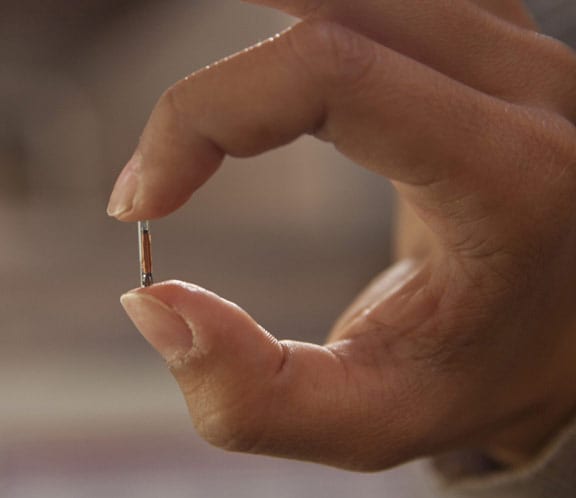How Microchips Work

Rollerblades; the Walkman; microchips. What do these things have in common? They were all introduced about 30 years ago. (Coincidentally, so was Prozac, which probably made it easier to deal with all those Walkman-wearing rollerbladers. But I digress.) Unlike the Walkman and rollerblades, microchips did not fall out of fashion. In fact, they continue to gain popularity with pet owners who care deeply about protecting their pets. The trouble is, if you ask a pet owner, how do microchips work?, you might get the same response as asking a teenager, What does a Walkman do? Because even though most pets are microchipped these days, most owners don’t understand how microchips function.
I know you may be thinking: Why is this a big deal? Pet gets implanted with a microchip; we’re good. What’s to know?
First, let’s review what a microchip isn’t. A microchip is not a GPS. It doesn’t transmit signals. It doesn’t do much of anything, really. It sits in your pet and holds a number. What makes the microchip useful is that it can be “read” by another device, the microchip scanner. When a scanner passes over your pet’s microchip, it detects the number and displays it on a screen so your pet can be identified. That is, if your pet’s microchip number is registered in a database. Wait – what?
Think of it this way: a microchip is like a social security card. Pets don’t have wallets, so they carry their social security card under their skin. Your social security card contains a unique number assigned only to you, and your pet’s microchip contains a unique number assigned only to them. Your social security number is useless unless it corresponds to your name and information in a searchable database. Same with your pet’s microchip number. The only way your pet’s microchip number and information gets into a searchable database is if you put it there.
The only way your pet’s microchip number and information gets into a searchable database is if you put it there.
So how do you go about this? If you know your pet’s microchip number (I’m sure you’ve got it memorized, right?) register it in a microchip registry and keep your information updated if you happen to move.
If you don’t know your pet’s microchip number, head to your vet, a shelter, or a rescue and ask them to scan your pet with a universal scanner (make sure they use a universal scanner as not all scanners can pick up all chips). Write down the number and proceed to found.org.
Now that your pet is protected, make sure to spread the word to your pet-loving friends. The more people know how to properly utilize microchips, the fewer lost pets stay missing, and the quicker we can make the issue of homeless pets obsolete, like the Walkman.
____________________
The Michelson Found Animals Foundation’s mission of saving pets and enriching lives is made possible by the generous contributions of Dr. Gary Michelson and Alya Michelson.


